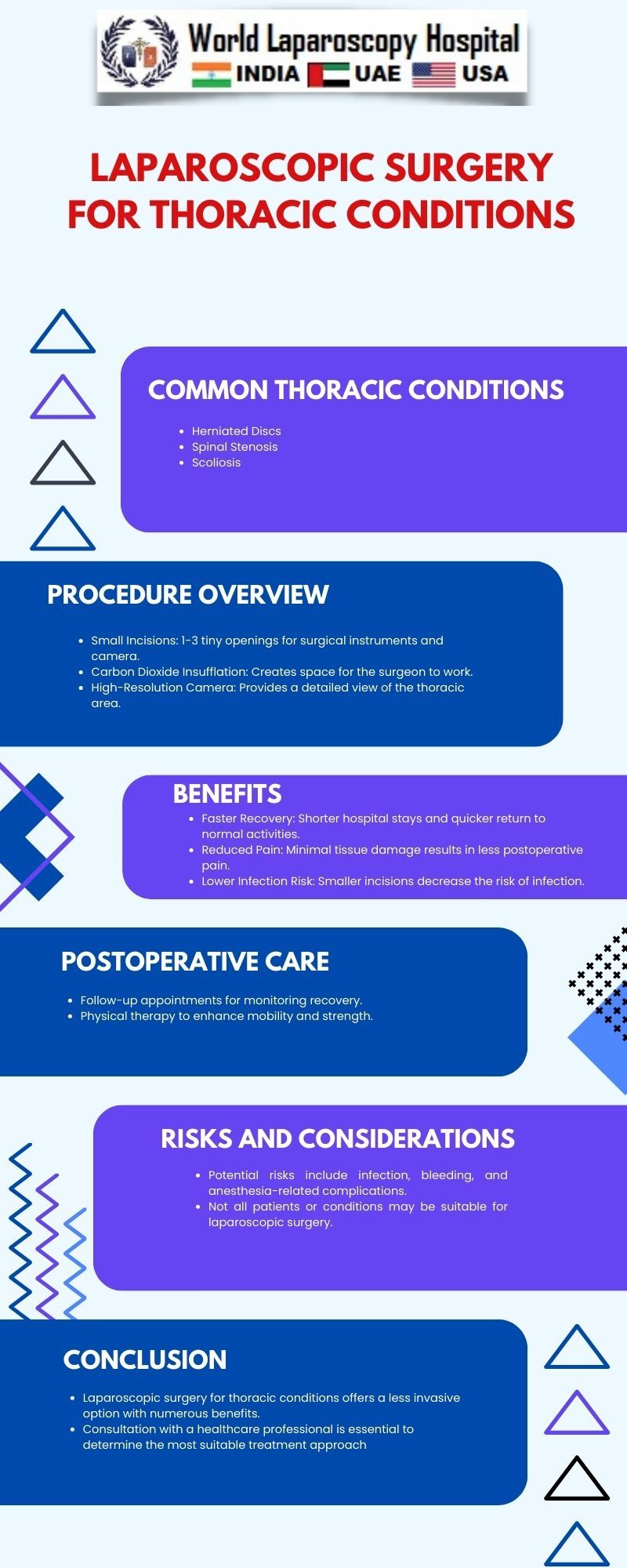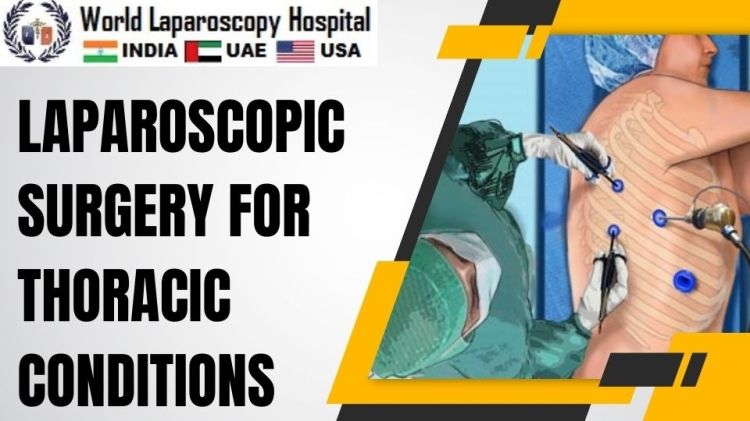Laparoscopic Surgery for Thoracic Conditions
Introduction:
Thoracic conditions, encompassing a range of disorders affecting the chest and upper abdominal region, often demand surgical intervention for effective treatment. In recent years, laparoscopic surgery has emerged as a revolutionary approach, offering patients a less invasive alternative to traditional open procedures. This article delves into the intricacies of laparoscopic surgery for thoracic conditions, exploring its techniques, benefits, applications, and potential advancements.

Understanding Thoracic Conditions:
-
Overview of Thoracic Disorders:
- Thoracic conditions encompass a spectrum of ailments affecting organs such as the lungs, esophagus, and mediastinum.
- Common disorders include lung tumors, esophageal cancer, hiatal hernias, and achalasia.
-
Challenges of Traditional Open Surgery:
- Traditional open thoracic surgery involves large incisions, leading to prolonged recovery periods, increased pain, and higher risk of complications.
- Limitations in accessing certain anatomical areas pose challenges in treating thoracic conditions effectively.
The Emergence of Laparoscopic Surgery:
-
Evolution of Minimally Invasive Techniques:
- Laparoscopic surgery, also known as keyhole or minimally invasive surgery, has evolved with advancements in technology and surgical instruments.
- The technique involves small incisions, specialized instruments, and a camera for enhanced visualization.
-
Key Components of Laparoscopic Surgery:
- Trocars and Cannulas: These instruments allow entry of the laparoscope and other surgical tools into the body.
- Laparoscope: A miniature camera provides high-resolution images of the surgical site.
- Specialized Instruments: Miniaturized tools enable precise manipulation of tissues during surgery.
Applications of Laparoscopic Surgery in Thoracic Conditions:
-
Lung Resection:
- Lobectomy and wedge resection for lung tumors can be performed laparoscopically, reducing the need for large chest incisions.
- Benefits include reduced postoperative pain, shorter hospital stays, and quicker recovery.
-
Esophageal Procedures:
- Laparoscopic fundoplication is effective in treating hiatal hernias and gastroesophageal reflux disease (GERD).
- Minimally invasive esophagectomy is employed for certain esophageal cancers, offering comparable oncological outcomes with reduced morbidity.
-
Treatment of Achalasia:
- Laparoscopic Heller myotomy is a preferred approach for achalasia, providing excellent symptomatic relief by cutting the esophageal muscle.
- Fundoplication may be added to prevent reflux post-surgery.
Advantages of Laparoscopic Surgery for Thoracic Conditions:
-
Reduced Pain and Faster Recovery:
- Smaller incisions result in less trauma to tissues, leading to reduced postoperative pain.
- Patients often experience faster recovery, allowing for a quicker return to daily activities.
-
Minimized Scarring:
- The cosmetic benefits of laparoscopic surgery are significant, with small scars that are less noticeable compared to traditional open procedures.
-
Lower Complication Rates:
- Laparoscopic surgery is associated with lower rates of complications such as infections, bleeding, and respiratory issues.
-
Improved Visualizations:
- The laparoscope provides magnified, high-resolution images of the surgical site, aiding surgeons in precise and meticulous procedures.
-
Shorter Hospital Stays:
- Many laparoscopic procedures for thoracic conditions allow for shorter hospital stays, contributing to overall healthcare cost reduction.
Challenges and Considerations:
-
Learning Curve:
- Surgeons require specialized training to master laparoscopic techniques, and the learning curve can be steep.
-
Patient Selection:
- Not all patients are suitable candidates for laparoscopic surgery, and individual factors such as anatomy and overall health must be considered.
-
Cost Implications:
- While laparoscopic surgery may lead to shorter hospital stays, the initial costs associated with equipment and training may be higher.
Future Directions and Innovations:
-
Robot-Assisted Laparoscopy:
- The integration of robotic systems in laparoscopic surgery allows for enhanced precision and maneuverability.
- Robotic-assisted procedures are being explored for more complex thoracic surgeries.
-
Advancements in Imaging Technology:
- Continued advancements in imaging technologies, such as 3D laparoscopy, offer improved depth perception and spatial orientation for surgeons.
-
Personalized Medicine and Tailored Approaches:
- With the growing understanding of genetic factors in diseases, personalized approaches to laparoscopic surgery may become more prevalent.
Conclusion:
Laparoscopic surgery for thoracic conditions has undeniably transformed the landscape of surgical interventions, offering patients a less invasive, more patient-friendly alternative. As technology continues to advance and surgical techniques evolve, the future holds promise for further refinement of these procedures. The ongoing pursuit of innovation in thoracic surgery reaffirms the commitment to enhancing patient outcomes, reducing recovery times, and pushing the boundaries of medical possibilities.
